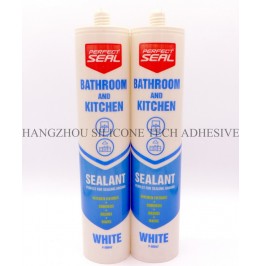Preventing Color Contamination in Sealants: Strategies for Consistent Aesthetics
Sealants are essential in construction, automotive, and industrial applications for creating watertight, airtight, or weatherproof bonds. However, when multiple colors are used in the same workspace or project, unintended mixing can lead to unsightly discoloration, reduced adhesion, or compromised performance. Addressing color contamination requires proactive planning, proper material handling, and adherence to best practices.

Understanding the Causes of Color Contamination
Color mixing in sealants typically occurs due to cross-contamination during application, storage, or cleanup. Even small traces of one color can alter the appearance of another, especially in translucent or light-hued formulations.
-
Shared Tools and Equipment: Using the same applicator guns, nozzles, or mixing trays for different colors without thorough cleaning introduces residual material. For example, a nozzle used for white sealant might retain microscopic particles that blend into a subsequent black application, creating streaks.
-
Improper Storage Practices: Stacking open containers or leaving lids off can allow dust, debris, or adjacent sealant drips to contaminate the product. In industrial settings, this risk increases when multiple colors are stored in close proximity without separation.
-
Environmental Factors: Airborne particles, such as paint overspray or construction dust, can settle on open sealant containers or freshly applied surfaces, leading to unintended color shifts.
To mitigate these risks, technicians must prioritize cleanliness and isolation of materials throughout the workflow.
Best Practices for Material Handling and Storage
Preventing color contamination starts with organized storage and dedicated tools for each sealant type.
-
Segregated Storage: Assign separate shelves or cabinets for each color, ensuring containers are tightly sealed when not in use. Labeling storage areas clearly reduces the likelihood of accidental mixing. For instance, in a workshop, green and gray sealants might be stored on opposite sides of a rack with visual dividers.
-
Disposable Applicators: Use single-use nozzles, gloves, or mixing sticks for each color to eliminate cross-contamination. Reusable tools should be cleaned with solvents compatible with the sealant base (e.g., isopropyl alcohol for silicone) and dried completely before reuse.
-
Controlled Workspaces: Designate specific zones for each color during application. For example, in automotive detailing, a technician might reserve one bay for black sealants and another for clear formulations, minimizing airborne transfer.
Application Techniques to Avoid Cross-Mixing
During the sealing process, meticulous attention to detail prevents unintended color blending.
-
Sequential Application: Complete all work with one color before moving to the next. If switching colors mid-project, clean tools thoroughly and wipe down surfaces to remove residual material. In roofing applications, this approach ensures crisp lines between contrasting sealant sections.
-
Masking and Barriers: Use plastic sheeting or painter’s tape to isolate areas where different colors meet. For example, when sealing joints in a multi-colored building facade, masking tapes can create clean edges and prevent overlap.
-
Layer Thickness Control: Applying sealant in consistent, even layers reduces the risk of runs or drips that could mix with adjacent colors. Thin, uniform beads are easier to manage and less prone to smearing during tooling.
Cleanup and Post-Application Care
Proper cleanup prevents lingering sealant particles from contaminating future projects.
-
Immediate Removal of Excess: Wipe down tools, containers, and work surfaces with lint-free cloths immediately after use. Residual sealant hardens over time, making it harder to remove and increasing the chance of accidental transfer.
-
Solvent Selection: Choose cleaning agents based on the sealant type (e.g., water for acrylics, mineral spirits for oil-based formulations). Avoid harsh chemicals that could degrade tool materials or leave residues affecting subsequent colors.
-
Waste Disposal: Dispose of used applicators, gloves, and rags in sealed bags to prevent color transfer in trash bins. In commercial settings, separate waste streams for each color simplify recycling and reduce contamination risks.
Addressing Accidental Color Mixing
Despite precautions, minor contamination may occur. Swift action minimizes aesthetic and functional damage.
-
Surface Correction: For freshly applied sealant with slight discoloration, use a plastic scraper or spatula to remove the affected area gently. Reapply the correct color, ensuring the new layer bonds properly with the substrate.
-
Tool Sanitization: If tools are contaminated, soak them in a solvent bath for the recommended time, then scrub with a nylon brush to dislodge stubborn residue. Rinse and dry thoroughly before reuse.
-
Documentation: Keep records of color usage and contamination incidents to identify patterns. For example, if a specific technician frequently mixes colors, targeted training can reinforce proper protocols.
By implementing these strategies, industries can maintain the visual integrity and performance of sealants, whether in architectural finishes, vehicle assemblies, or industrial components. Consistent color quality enhances customer satisfaction and reduces costly rework, making contamination prevention a critical aspect of sealant application.
Prev: The influence of humidity changes after the application of bathroom sealant
Next: Avoid contact with sharp objects after the sealant is applied
